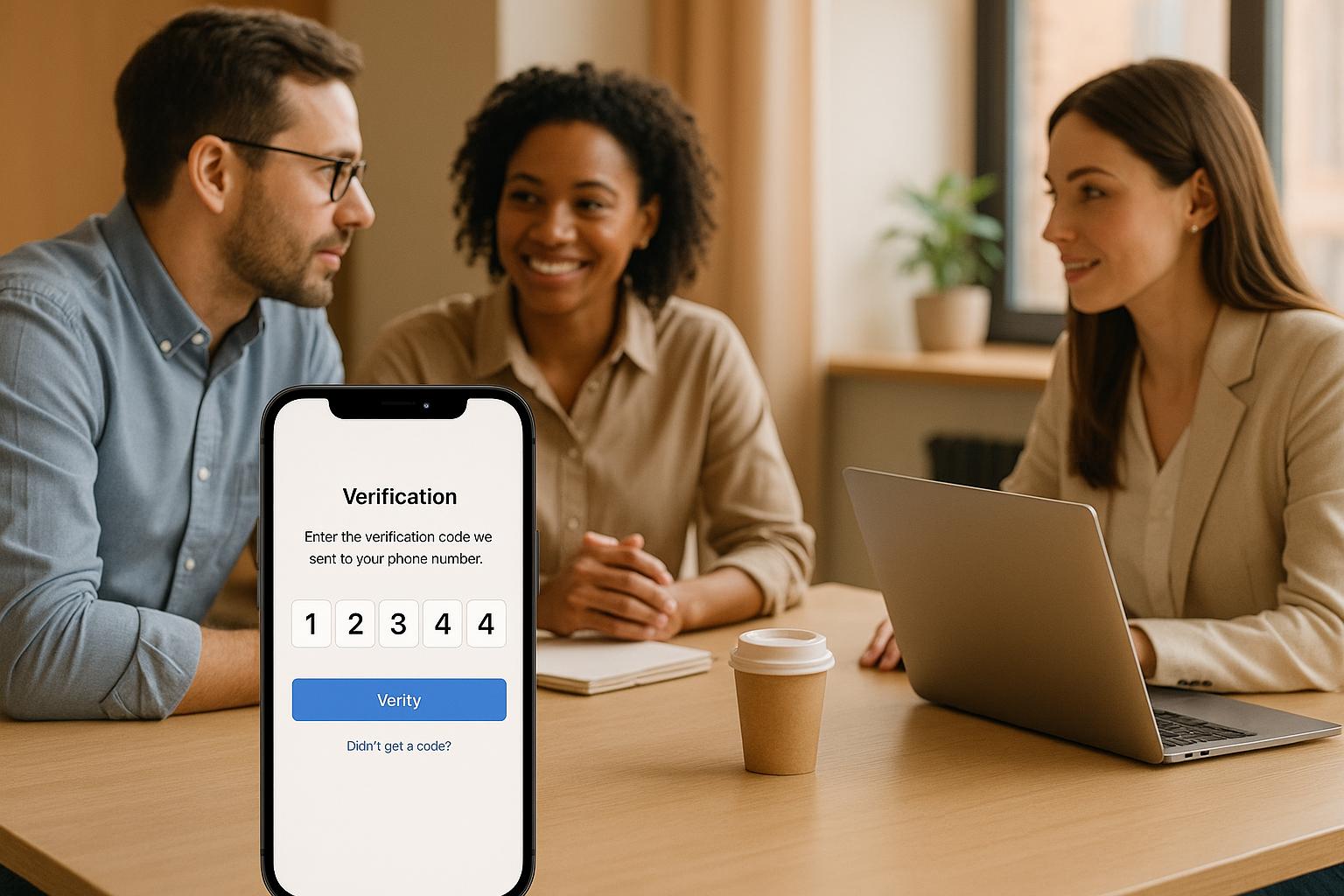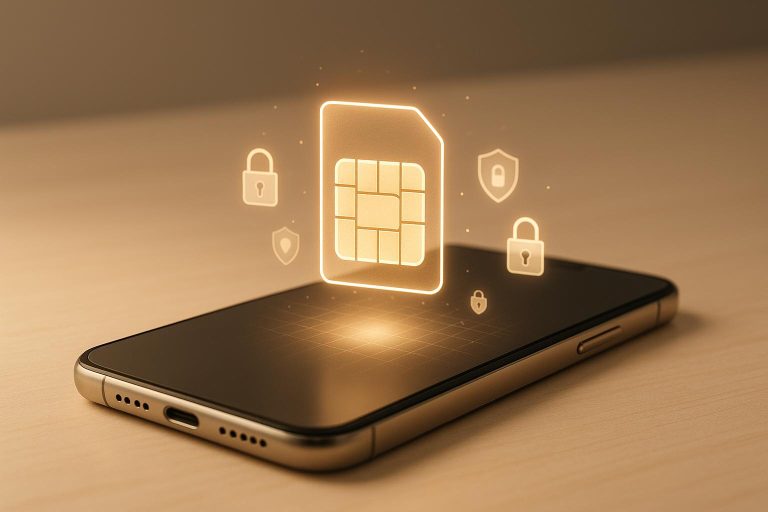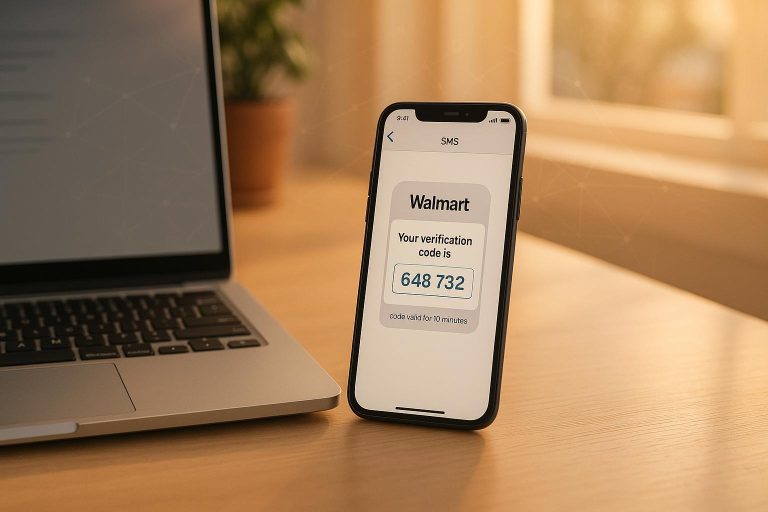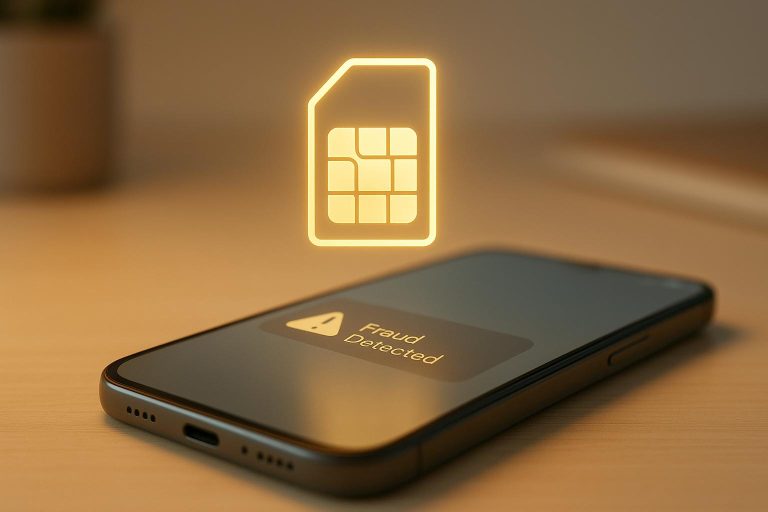Setting Up Your Startup’s Tech Stack: The Phone Number You Actually Need
When building your startup’s tech stack, choosing the right phone number is often overlooked but critical. A poor choice can lead to verification failures, security risks, and operational delays. Here’s what you need to know:
- Real-SIM numbers are the best option for SMS verification. They work with major platforms like Stripe, AWS, and banks, ensuring reliable access and security.
- VoIP numbers (e.g., Google Voice) are great for communication but often fail verification due to being flagged by fraud prevention systems.
- Disposable numbers are risky and unreliable, as they can be recycled or blocked, leading to account access issues.
For a hassle-free experience, use real-SIM numbers for platform verification and VoIP numbers for calls. This dual approach ensures smooth operations and keeps your team connected and secure.
Phone Number Types for SMS Verification
Choosing the right type of phone number for SMS verification can have a big impact on your startup’s operations. Each option comes with its own set of strengths and weaknesses, so understanding them is key to making an informed decision.
Real-SIM Numbers: Reliable and Widely Accepted
Real-SIM numbers are tied to physical SIM cards and operate through traditional cellular networks. This connection to carrier-grade service makes them highly dependable.
The biggest perk of real-SIM numbers is their wide acceptance. Since they look and function just like regular mobile numbers, most verification systems recognize them as legitimate. They work seamlessly with banking apps, payment platforms like Stripe, cloud services such as AWS, and social networks like WhatsApp and LinkedIn.
Another advantage is their long-term reliability. Unlike personal phone numbers, real-SIM numbers often come with features tailored to teams. For instance, verification codes can be accessed by multiple team members through shared dashboards or integrations with tools like Slack. This makes them a practical choice for businesses that need consistent and secure access. Now, let’s see how they compare to VoIP and disposable options.
VoIP Numbers: Great for Calls, Not for Verification
VoIP (Voice over Internet Protocol) numbers rely on internet connections rather than cellular networks to handle calls and messages. Services like Google Voice, RingCentral, OpenPhone, and Grasshopper are popular for business communications.
While VoIP numbers are excellent for handling calls, they fall short when it comes to verification. Many platforms actively block VoIP numbers, using sophisticated detection systems to identify and reject them. For example, trying to verify a Coinbase account or set up Stripe payments with a Google Voice number often results in messages like "This number cannot be used for verification" or "Please use a mobile number."
The issue lies in trust. Verification systems maintain databases of VoIP number ranges, flagging them as unsuitable for secure processes. This makes VoIP numbers unreliable for startups that depend on smooth verification.
Disposable Numbers: Cheap but Risky
Disposable numbers are temporary phone numbers designed for short-term use. They’re often free or very inexpensive, which makes them appealing for quick verification tasks.
However, disposable numbers come with serious risks. Since they’re recycled quickly, you could lose access to critical accounts if the number gets reassigned. Imagine setting up your AWS infrastructure with a disposable number – someone else could later gain control of that number and potentially access your account recovery options.
Another major drawback is platform detection. Many verification systems blacklist known disposable number ranges, meaning these numbers frequently fail verification attempts. For startups dealing with sensitive data or financial transactions, the security risks are especially concerning. A compromised verification number could expose your business to significant vulnerabilities, putting your operations at risk.
Why Real-SIM Numbers Work Best for Startups
Real-SIM numbers consistently outperform VoIP and disposable alternatives, offering a more reliable and secure option for startups. The advantages go beyond technical differences – they directly influence your ability to access essential tools and maintain smooth, secure operations.
Platform Acceptance and Reliability
Major platforms like Google, banks, and Stripe have advanced systems in place to detect and block VoIP and disposable numbers. These platforms maintain comprehensive databases of VoIP number ranges, flagging them as unsuitable for verification.
Real-SIM numbers, on the other hand, operate through physical SIM cards and traditional cellular networks. This ensures that verification codes are delivered promptly and reliably. Their carrier-grade connection makes them indistinguishable from regular mobile numbers in verification systems. This reliability highlights why VoIP numbers often fall short for startups.
When VoIP Numbers Fail Startups
Verification issues with VoIP numbers can lead to significant disruptions. These failures are more than just inconvenient – they can derail operations, especially during critical moments like setting up business accounts.
Take payment platforms, for example. Stripe and similar services reject VoIP numbers for verification due to fraud prevention measures. This can delay your ability to accept payments, potentially postponing product launches.
Banks pose another challenge. Most business banks require SMS verification for account setup and ongoing security measures. VoIP numbers are routinely blocked, forcing startups to find alternatives or face delays in accessing essential financial services.
The problems don’t stop there. Cloud services often reject VoIP numbers, creating operational roadblocks. If your team relies on shared accounts, VoIP verification failures can lock out multiple members, stalling productivity across your organization. Unlike personal phone numbers, which are controlled by one individual, these failures can disrupt your entire team.
Real-SIM Benefits for Team Security
Real-SIM numbers aren’t just about platform compatibility – they also enhance security, which becomes increasingly important as your startup grows. The physical SIM card requirement makes them far more secure than VoIP numbers, which exist only as software configurations and are easier to compromise.
For two-factor authentication, real-SIM numbers ensure reliable delivery of verification codes. They also support secure multi-user access through shared dashboards and integrations, allowing teams to receive codes without sharing personal numbers or compromising security.
Regulated industries, in particular, benefit from real-SIM solutions. These numbers can be registered to your business, ensuring compliance with KYC (Know Your Customer) and AML (Anti-Money Laundering) regulations – something VoIP and disposable numbers simply can’t achieve[1].
Scalability is another key advantage. As your team grows, real-SIM solutions can easily accommodate additional numbers for different departments or functions. This flexibility ensures security and operational efficiency, unlike VoIP options, which often face increased blocking as usage scales.
Nearly 80% of data breaches are tied to weak or stolen credentials[1]. By adopting real-SIM numbers, you’re investing in a secure verification system that safeguards your business accounts and sensitive data from unauthorized access.
How to Set Up a Real-SIM Solution
To get started with a real-SIM solution, you’ll need to evaluate your verification requirements, select a suitable provider, and integrate real-SIM numbers into your existing systems.
Choosing a Real-SIM Provider
When picking a provider, focus on compatibility, team-friendly integrations, and clear pricing.
First, ensure the provider’s platform works seamlessly with the major services your startup relies on. Look for providers offering dedicated numbers that aren’t shared with other users. Shared numbers often face issues like being flagged or rejected by verification systems, which can disrupt your workflow.
Next, check for tools that simplify team collaboration, like webhooks and real-time dashboards. A real-time dashboard allows you to monitor SMS activity across your organization, making it easier to manage and track verification processes.
Transparent pricing is another key consideration. Avoid providers with hidden fees or overly complicated pricing structures. For instance, JoltSMS offers a straightforward $50 monthly flat rate, which includes unlimited inbound SMS (under fair-use policies).
Flexibility in contract terms is also important. Some providers lock you into lengthy agreements, while others offer month-to-month plans. A 30-day minimum commitment strikes a balance, giving you stability without tying you down as your startup evolves.
Finally, consider the quality of customer support. When verification issues arise, having access to dedicated human support can save time and prevent delays in critical processes like account setups or team access.
Once you’ve chosen a provider, the next step is integrating their numbers into your workflow efficiently.
Adding Real-SIM Numbers to Your Workflow
Start by identifying the key areas where verification codes are needed, such as payment processors, cloud services, or banking platforms.
To streamline access, configure webhooks that automatically deliver verification codes to your team’s communication tools. This automation removes the need for manual sharing and speeds up processes, ensuring no delays in accessing critical accounts.
For custom applications or internal tools, API integration is a game-changer. REST API access allows you to programmatically retrieve SMS messages and incorporate them directly into your systems, creating an automated and seamless verification process.
As your team grows, managing access becomes essential. Define clear protocols for who can view the real-SIM dashboard and receive verification codes. Document these procedures to ensure smooth onboarding for new team members and maintain security.
These integration features highlight why real-SIM solutions are often more effective than VoIP services, as detailed below.
Real-SIM vs. VoIP Services Comparison
Understanding the distinctions between real-SIM and VoIP services is crucial for selecting the right solution for SMS verification.
| Feature | JoltSMS (Real-SIM) | Google Voice | OpenPhone | RingCentral |
|---|---|---|---|---|
| SMS Verification Success | 99.9% acceptance rate | Frequently blocked | Often rejected | Commonly blocked |
| Platform Compatibility | 1,000+ platforms | Limited acceptance | Banking/payment blocks | Verification failures |
| Technology | Physical SIM cards | VoIP software | VoIP-based | Cloud-based VoIP |
| Team Access | Webhook integrations | Personal use | Shared numbers | Business features |
| Monthly Cost | $50 flat rate | Free (limited) | $15+ per user | $20+ per user |
| Primary Use Case | SMS verification | Personal calling | Business calling | Enterprise communication |
While VoIP services like Google Voice and OpenPhone are great for business or personal calls, they often fall short when it comes to SMS verification. Their software-based numbers are frequently flagged or rejected by verification systems. On the other hand, real-SIM solutions use physical SIM cards tied to cellular networks, making them functionally identical to regular mobile numbers and highly reliable for verification.
Another advantage of real-SIM solutions like JoltSMS is their flat-rate pricing, which focuses specifically on SMS verification. Unlike many VoIP services that charge per user for features you might not even need, real-SIM providers deliver specialized tools like webhook delivery and API access tailored for verification workflows.
sbb-itb-070b8f8
Verification APIs vs SMS Receiving Services
When it comes to SMS verification, startups typically encounter two types of services: those that send verification codes and those that receive them. Knowing the difference is crucial for selecting the right tools to streamline your verification process.
APIs: Sending Verification Codes
APIs like Twilio Verify, Vonage Verify, and Plivo Verify are built to send SMS verification codes directly to your users. These tools integrate seamlessly into your app’s backend, enabling you to automate tasks like two-factor authentication, password resets, or account verification. For example, when a user enters their phone number during signup, your system can trigger the API to send a code. The user then enters the code to confirm their identity. These services typically charge on a per-message basis.
While these APIs are excellent for sending messages, they don’t solve a common challenge startups face: receiving verification codes from external platforms.
JoltSMS: Receiving Verification Codes
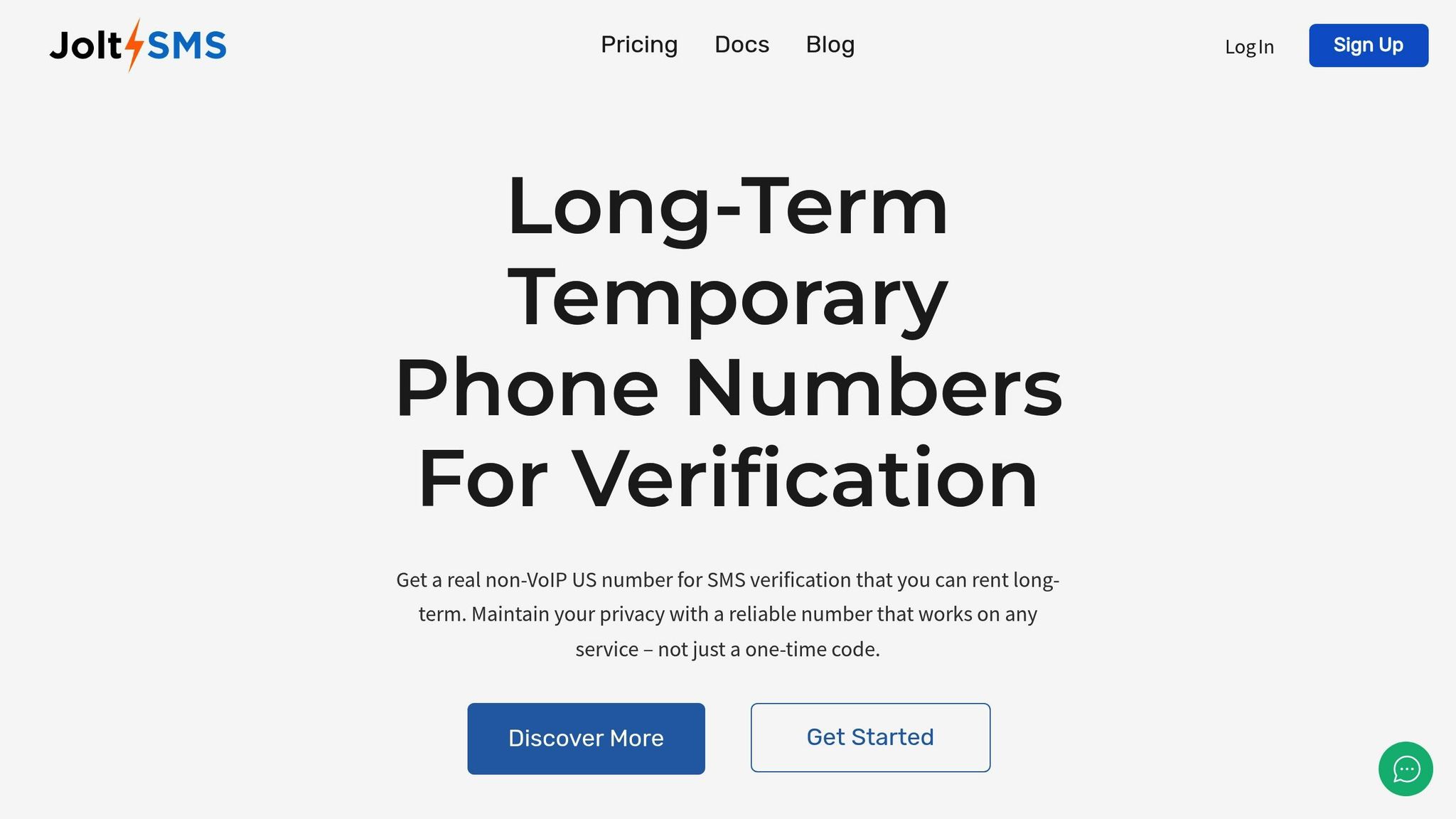
Handling inbound verification codes requires a completely different solution. This is where JoltSMS steps in. Using real-SIM numbers that are recognized by over 1,000 platforms, JoltSMS ensures reliable receipt of verification codes. Once a code is received, it’s delivered to you through webhooks, a real-time dashboard, or an API – all for a flat monthly rate of $50.
The use of real-SIM numbers guarantees that codes are received even in situations where APIs are limited to sending messages. Unlike verification APIs that charge per message, JoltSMS offers a predictable pricing model, making it easier to manage costs as your business grows.
Optimizing Your Verification Workflow
To create a seamless verification process, consider combining these tools. Use an API to send codes to your users, and rely on JoltSMS to receive codes during onboarding or account setup. This combination ensures that your startup’s verification system is both efficient and reliable, covering all bases for sending and receiving messages.
Building a Reliable Tech Stack with the Right Phone Number
Your phone number strategy isn’t just about making calls – it’s a key part of your business infrastructure that directly impacts security and access to essential platforms. Choose poorly, and you risk being locked out of critical tools. Choose wisely, and you set a strong foundation for growth.
VoIP services are great for calls and meetings, but they often fall short when it comes to SMS verification. Many major platforms block VoIP numbers for verification purposes, which can create unnecessary headaches. That’s why it’s crucial to treat SMS verification as a separate part of your IT infrastructure. The solution? A dual phone number strategy: VoIP for team communication and real-SIM numbers for platform verification. This way, you can maintain cost-effective communication while ensuring seamless access to the tools your business depends on.
A dedicated SMS verification solution can make all the difference. For example, JoltSMS offers 99.9% SMS delivery reliability using carrier-grade SIMs, all for a flat $50 monthly fee. It integrates with webhooks, enabling instant access to verification codes for your entire team. No more waiting for someone to check their phone and share codes manually. Whether it’s developers verifying AWS accounts, the finance team accessing banking platforms, or the marketing team setting up social media accounts, everyone can work independently and securely.
The key takeaway? Phone numbers should be treated as specialized tools, not one-size-fits-all solutions. Use VoIP for what it’s best at – business communication – and rely on real-SIM solutions for tasks that require dependable SMS verification. This approach ensures your tech stack is strong enough to handle critical tasks like verifying business accounts or implementing team-wide two-factor authentication.
When platform access is reliable and immediate, growth becomes much smoother. A real-SIM solution eliminates recurring verification issues, giving your team the infrastructure they need to stay focused and productive. By integrating this into your tech stack, you create a secure, efficient system that complements your existing communication tools seamlessly.
FAQs
Why are real-SIM numbers better for SMS verification than VoIP or disposable numbers?
Real-SIM numbers stand out as a dependable option for SMS verification because they rely on physical SIM cards. This makes them widely accepted as legitimate by more than 1,000 platforms. As a result, they deliver higher success rates for receiving verification codes, unlike VoIP or disposable numbers, which are often flagged as unreliable.
What sets real-SIM numbers apart is their long-term usability. Unlike temporary or VoIP numbers, they are rarely blocked or restricted, making them a smart choice for startups. Whether it’s for secure account verification or streamlining team workflows, real-SIM numbers provide a consistent and reliable solution that scales with your needs.
How can startups seamlessly add real-SIM phone numbers to their tech stack for account verification?
Startups looking to enhance their tech stack can benefit from incorporating real-SIM phone numbers for verification purposes. These numbers are widely accepted – over 1,000 platforms recognize them – making processes like account verification and two-factor authentication (2FA) seamless.
To begin, it’s essential to choose a provider that offers multi-user access and allows for straightforward number management across your team. This setup ensures that team members can securely access the tools they need without sacrificing efficiency. Real-SIM numbers stand out because they bypass the common pitfalls of VoIP numbers, which are frequently blocked by platforms such as WhatsApp, Google, and Stripe for SMS verification.
By adopting real-SIM technology, startups can simplify their workflows, minimize verification errors, and maintain secure, reliable account access as they grow.
Why are VoIP numbers a risky choice for SMS verification in startups?
Using VoIP numbers for SMS verification can bring about a range of problems that might jeopardize your startup’s security and smooth operation. Many platforms actively block or reject VoIP numbers during the verification process, leading to failed authentication attempts and frustrating delays. On top of that, VoIP numbers are more prone to security risks like interception, SIM swapping, and unauthorized access, leaving your accounts vulnerable to takeovers.
For startups that depend on SMS verification to protect user accounts or implement two-factor authentication (2FA), these vulnerabilities can pose serious challenges. Choosing real-SIM numbers instead offers greater reliability, stronger security, and wider acceptance across platforms, helping your business steer clear of unnecessary interruptions.

